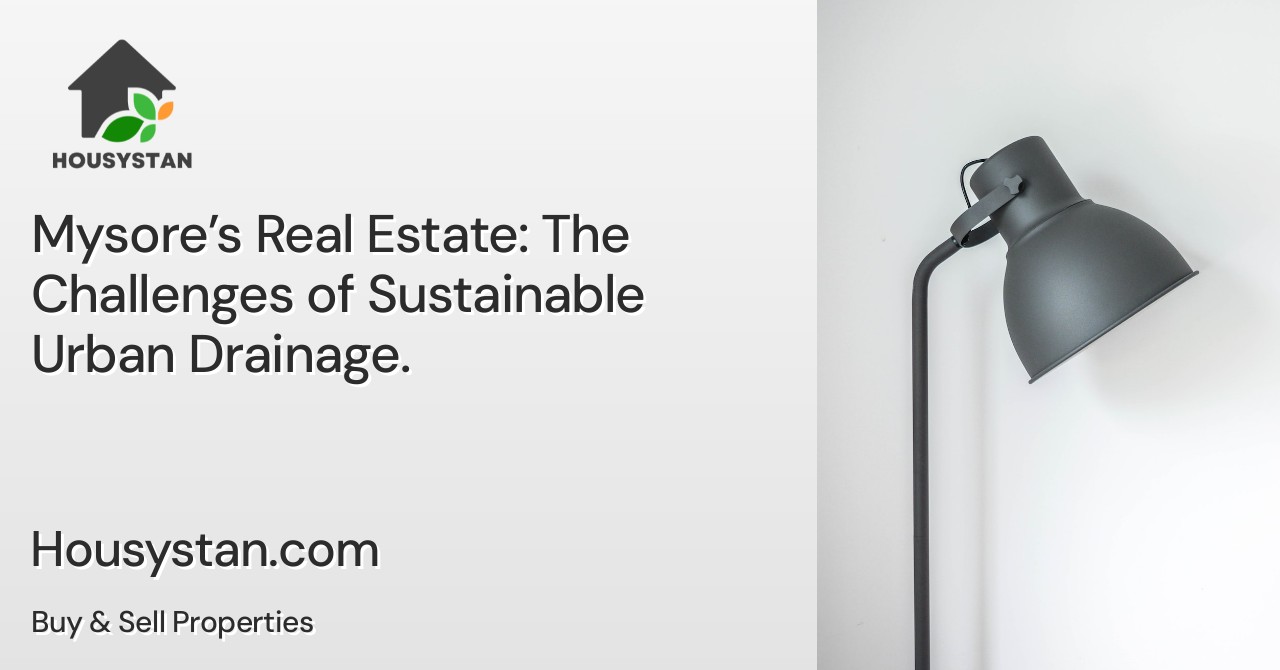Mysore’s Real Estate: The Challenges of Sustainable Urban Drainage
Read latest blogs and articles from Housystan

The Information mentioned here was last updated on:
4/12/2025Mysore’s Real Estate: The Challenges of Sustainable Urban Drainage
Mysore, a city celebrated for its rich heritage, is rapidly transforming into a vibrant urban center. As more people choose to settle in this picturesque locale, the demand for residential and commercial properties continues to surge. However, this urban expansion brings with it a set of pressing environmental concerns, particularly in relation to sustainable urban drainage systems (SUDS). Proper drainage is essential in Mysore’s real estate sector not only to manage stormwater but also to safeguard property values, reduce flood risks, and maintain the city’s ecological balance.
The city’s unique topography, combined with increasing construction activities, presents significant obstacles to effective water management. Inadequate drainage infrastructure can lead to waterlogging, soil erosion, and contamination of groundwater resources. These issues not only threaten the structural integrity of buildings but also affect the overall quality of life for residents. For investors and developers, ignoring the necessity for advanced drainage solutions can result in long-term financial and reputational setbacks.
- Verified Tenants/Buyers
- Unlimited Property Listing
- Zero subscription/charges fee
Implementing sustainable drainage in Mysore requires a strategic approach that integrates green spaces, permeable surfaces, and modern engineering techniques. Rain gardens, bioswales, and permeable pavements are examples of solutions that help absorb and filter rainwater naturally. These methods not only mitigate flooding but also enhance the visual appeal and livability of residential communities. Additionally, such eco-friendly initiatives support Mysore’s goal of becoming a model smart city in Karnataka.
Local authorities and developers must work collaboratively to address the challenges posed by climate change and urban sprawl. By prioritizing environmentally conscious drainage designs, the real estate industry in Mysore can ensure long-term sustainability and resilience. Residents, too, benefit from reduced flood risks, improved groundwater recharge, and healthier surroundings.
In conclusion, Mysore’s real estate sector stands at a crossroads where growth must align with responsible urban planning. Prioritizing sustainable drainage solutions is not just an environmental imperative but a value proposition for every stakeholder invested in the city’s future. By adopting these practices, Mysore can continue to thrive while preserving its natural charm and supporting sustainable urban living.